The first time I played the piano wearing the 3DME In-Ear Monitor System, I was so overcome by the sound that I rested my head on the piano and sobbed. The pealing, sweet high overtones and the rich vibrations of the bass transported me back, to that time before I had lost so much of my hearing.
ASI Audio’s 3DME in-ear monitors are earbuds with state-of-the-art microphones optimized for music, whose natural sound output may be programmed to your unique hearing profile and whose fit may be customized to the unique shape of your ear canal. The monitors’ form factor consists of earbuds wired to a battery-charged bodypack.
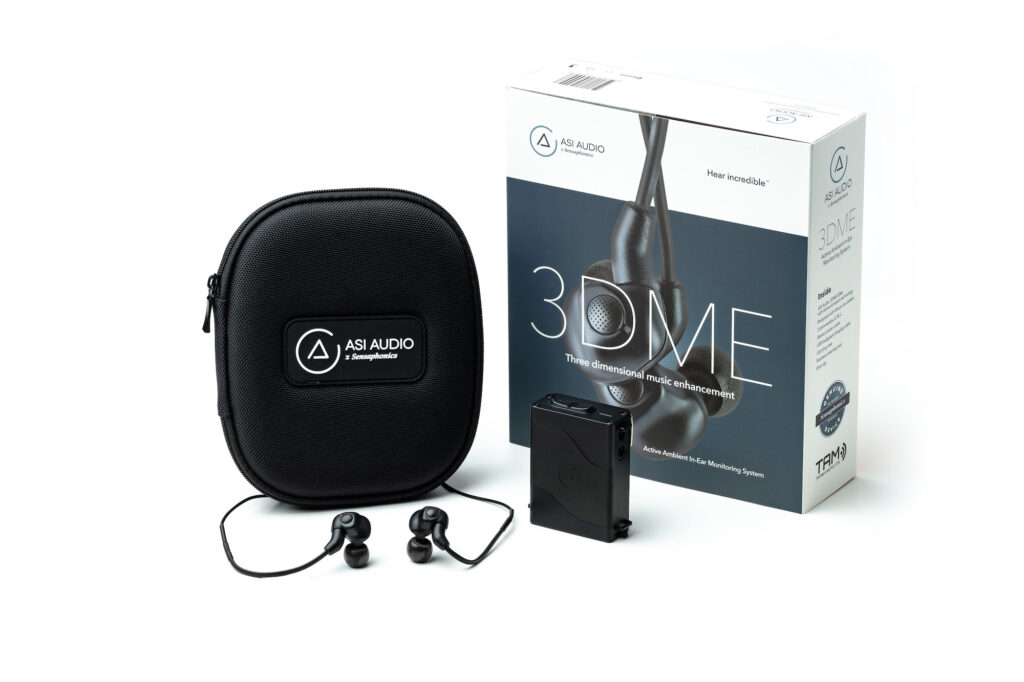 I should mention that while I was crying at the piano, I was in the middle of a tele-audiology session with Dr. Heather Malyuk, an expert music audiologist, to customize the 3DME’s to my hearing profile. After I looked up, Dr. Malyuk’s eyes shone. “This is my favorite part of the job,” she said. Dr. Malyuk is owner of Soundcheck Audiology and Head of Audiology at Tuned and was also part of the team who created and developed the 3DME.
I should mention that while I was crying at the piano, I was in the middle of a tele-audiology session with Dr. Heather Malyuk, an expert music audiologist, to customize the 3DME’s to my hearing profile. After I looked up, Dr. Malyuk’s eyes shone. “This is my favorite part of the job,” she said. Dr. Malyuk is owner of Soundcheck Audiology and Head of Audiology at Tuned and was also part of the team who created and developed the 3DME.
Now, whenever I play the piano, I wear the in-ear monitors, not my hearing aids, despite the fact that I wear premium hearing aids with an optimized music setting. The in-ear monitors have revolutionized the quality of my playing and most importantly my enjoyment of the piano.
Immediately after my session with Dr. Malyuk, I began work on this product review. I wanted to share my experiences with you, musicians and music lovers with hearing loss. I would like for you to be aware that you have alternatives for music beyond wearing hearing aids or simply ignoring your hearing difficulties. I believe that even musicians and music lovers with a mild hearing loss would benefit from trying out the system.
While the in-ear monitors provide a superior alternative to hearing aids for music, they are not ideal for conversations. As Dr. Malyuk notes, the monitors “aren’t designed for speech and background noise.” Hearing aids, whether prescription or OTC, remain the best choice for conversing. I plan on continuing to wear my hearing aids for any non-musical activity.
At Grand Piano Passion™, we generally do not recommend specific brands, but in this case, we believe the 3DME monitors have no direct alternatives. Perhaps the closest would be music earbuds with a transparency mode that may be personalized with your hearing profile, but their sound quality is not comparable. If and when competitive products arise, we will add them to this review.
I received no compensation to write this review. I paid for the monitors, accessories, and attendant audiology services myself. At Grand Piano Passion™, we remain purely focused on our mission of sharing information and inspiration for musicians with hearing loss and adults who play the piano. What follows is my assessment of the 3DME’s benefits, disadvantages, and total cost, plus more explanation of how the system works.
Benefits of the 3DME In-Ear Monitor System
The 3DME has a number of tangible benefits, starting with its natural, gorgeous sound quality. After a few months practicing with the 3DMEs and customizing the settings, I conducted a quick test. I played the same piece of music, the Brahm’s Intermezzo in A-major, first wearing the monitors, then my hearing aids. Compared to the monitors, my Brahm’s Intermezzo with hearing aids sounded flat, twangy, and robotic.
Earlier versions of this review claimed that the 3DMEs analog technology contributed to its superior sound quality because digital does not sample frequently enough. However, today digital systems sample sound anywhere from 50,000 to almost 100,000 times per second. In a well-designed system, the human ear cannot detect a difference between digital and analog sound. My follow-up research helped me to understand that the 3DME’s stunning sound quality comes instead from its microphone placement in the ear canal and its wide dynamic range.
Optimal Microphone Placement
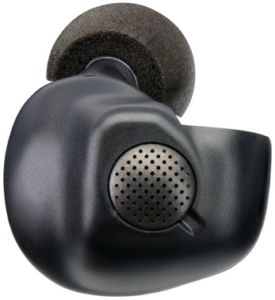 The 3DME microphones align directly with the center of the ear canal, mimicking your ears’ natural construction and contributing to the music’s natural sound quality. In contrast, close to 80% of hearing aids sold today are behind-the-ear models, tucking the microphones behind the ear, not in the canal.
The 3DME microphones align directly with the center of the ear canal, mimicking your ears’ natural construction and contributing to the music’s natural sound quality. In contrast, close to 80% of hearing aids sold today are behind-the-ear models, tucking the microphones behind the ear, not in the canal.
ASI Audio designed the 3DME’s small earpieces to seal the ear canal, allowing for complete control over the sound, especially important in live stage use. As a result, the company needed to overcome the sensation of sound being trapped in your ear, known as occlusion. “There’s compensation you need to do for the fact that you plugged up the ear canal,” explains Steve Julstrom, ASI Audio’s engineer and chief system architect, who also happens to be an avid violinist and pianist. Filling up the ear canal stultifies natural canal resonance at frequencies around 2.5kHZ, “about the sound of things like the bow scratching on the violin,” he concludes in our video interview.
To avoid occlusion, ASI Audio patented a technology Julstrom calls accurate frequency response. This technology combined with optimally situated microphones plays a strong role in creating deeply resonant sound.
No Distortion or Clipping of Loud Sound Peaks
Music has frequent, tiny, and yet strong surges in sound that give it its character. A good example is the cymbals clashing loudly in a symphony, reaching for a millisecond a peak of 140 dB close up. Hearing aids would tend to clip the sound of the cymbals. “Without those peaks, music sounds less exciting, even distorted,” asserts Dr. Michael Santucci, AuD, a founder of ASI Audio, as well as Sensaphonics president and founder, in a video interview. In contrast, music preserving these sound peaks “sounds cleaner and more precise.”
The 3DME monitors provide access to the full range of sounds within a loudness limit set by you, the user. In my case, I have set the limiter to a very conservative 88 dB, because I’m concerned about layering excess noise damage in my cochlea on top of my genetic loss. Yet if someone were to clang the cymbals next to me in my living room, I would still hear them at a safe level while wearing the monitors.
The company achieves what they call this “wide dynamic range” by utilizing a hybrid analog and digital technology. Julstrom explains that incoming sound first flows through the 3DME’s analog domain, which is capable of reducing very loud sounds, not just simply eliminating or distorting them like digital hearing aids. Once the analog domain lowers the level of very loud sounds, “now we have a controlled dynamic range. It’s been modified by the microphone gain control and the limiter,” explains Julstrom. The monitors then convert the analog sound to digital. It’s in the digital domain that sound is enhanced according to the EQ settings based on your hearing loss profile.
As a result, any sounds louder than the Limiter Threshold will not sound clipped as they might with digital hearing aids. “It’s a slow limiter, gently reducing the peaks in sound” above the threshold, explains Dr. Santucci. The result is the full dynamic range of music delivered to you not only programmed for your hearing loss but also at a limit you establish.
Broad Frequency Range
The in-ear monitors capture sound across the entire frequency range, up to 20kHz, approximately the highest-pitched sound audible to humans.
For someone with perfect hearing, the 3DME system’s broad frequency range infuses the music with a full-bodied quality. While the highest note on the piano, for example, only registers at just over 4kHz, the harmonic overtones, those secondary tones that ring resonant with the main tone played, are in much higher frequencies. In fact, for most instruments, the harmonics sound at least as high as 10kHZ, as shown in this Instrument Frequency Chart.
Are people with hearing loss able to benefit from the in-ear monitors’ frequency range? It depends on the pattern of their hearing loss, especially in the higher frequencies. Santucci reports that after 35 years of testing musicians’ hearing, “I’ve got tons of data. I can tell you that people over 50 aren’t hearing past 14kHz and people over 60, or if they hear over 10kHz or 12kHz, they’re very lucky.”
Yet 10kHz still captures a fair amount of harmonics on instruments like the piano. In comparison, the top of the frequency range for the installed base of hearing aids, more focused on speech enhancement, is generally 6kHz to 8kHz. Newer hearing aids may start to address this deficiency. The Widex SmartRIC with a regular receiver has frequency ranges up to 8.5k to 10k (depending on the measurement technique). The power receiver, appropriate for people with more severe hearing losses, however, tops out at 7.6kHz to 8.2kHz (once again depending upon the measurement technique), according to the company data sheet.
That leaves anywhere from at least 2kHz to 4kHz of high-pitched sounds accessible to the average person over 60 that hearing aids may fail to amplify. In my personal experience, chords in the piano’s upper octaves sound considerably richer when I use the monitors as opposed to my hearing aids programmed to the music setting.
How should you sort through all of this? Run a little experiment at home. Play your instrument using your hearing aids, then switch to the 3DME monitors. See if you notice a significant difference in the quality and level of the higher-pitched sounds.
No More Small Echoes from Delay
Most hearing aids have processing delays, a gap between when a sound occurs and when it reaches the ear canal, of about 3 to 11 milliseconds. The user experiences this delay, or latency, as an echoing quality of the sound. “Some people will notice the timing as a little off,” explains Dr. Santucci. The delay occurs because hearing aids process sound with the objective of improving users’ ability to hear conversations, in environments like loud restaurants. Santucci reports that the 3DME in-ear monitors have no processing delay at all.
Some newer hearing aids, such as the Widex SmartRIC, address this processing delay. With the Widex ZeroDelay technology, the processing speed is “below .5 milliseconds.” To find out the processing delay for your hearing aids, ask your audiologist to see your model’s data sheet or search online for the data sheet, often available in hearing aid companies’ websites, in the section devoted to hearing care professionals.
No More Exaggerated Background Noise
When I have performed with hearing aids in the past, someone down in the audience leafing through a program sounded like a person crinkling paper next to my ear. That’s because my hearing loss in the high frequencies is so severe that my hearing aids seek to magnify any soft sound in the region. I’m thrilled to report that with the 3DME monitors, my struggle to ignore these overly magnified sounds from the audience is a problem of the past.
Ability to Self-Adjust
Whether you elect to visit an audiologist or rely on yourself for the initial programming, over time you will most likely fine-tune the settings. I found that having the freedom to adjust the settings as often as I wished, without having to schedule an audiology appointment, was an important benefit of the system.
In contrast, prescription hearing aids sold and serviced by hearing care professionals do not have this flexibility, despite research showing that users can select settings that produce hearing outcomes comparable to those achieved by professionals.
Earbud Form Factor
Having grappled with stigma even after I became a hearing health advocate, I understand when people share with me that they don’t want to be seen wearing hearing aids. In this case, the in-ear devices resemble earbuds, not traditional hearing aids. Professional rock musicians often use the system, giving the devices a refreshing cool-factor.
Convenience and Choice with Tele-Audiology
Carting large instruments to the audiologist to test programming changes is challenging to impossible. If we pianists have it hard, how about the organ! The church organist Brian Henderson was fortunate in that his audiologist visited his church to program the music setting on his hearing aids.
With a tele-audiology session on the 3DMEs, logistics to bring audiologist and instrument to the same location vanish. I very much enjoyed the process of tweaking the settings with Dr. Malyuk real-time while seated at my beloved Steinway grand in my home.
Since you are meeting via tele-audiology, you are not constrained by geography. The entire field is open to you to find the best audiologist for your needs, one who is expert in music and the 3DME system.
Limitations of the 3DME In-Ear Monitor System
Although the 3DME has a number of significant benefits, I would also like for you to be aware of its limitations.
Bulky Form Factor
The 3DME monitors are far less streamlined and convenient than hearing aids. The monitors protrude from my ears, while the bodypack makes me feel as though I have a sound system strapped to me (which I do, in a sense). The long cord extending from the earbuds to the bodypack is not exactly subtle. I’ve coached myself to make sure that I don’t sit on the cord, accidentally removing the earbuds during a performance.
Moreover, the volume buttons on the body pack are extremely sensitive. On several occasions, when the body pack was clipped onto my waistband, I brushed against the buttons without realizing it, inadvertently raising the volume.
30-day return policy
The return policy is important because the 3DME system does not work for everyone with a hearing loss. Dr. Malyuk explained to me that for people with a severe or profound hearing loss that the success rate is about 50 percent.
If your hearing loss falls into those categories, thirty days does not provide much time to assess the product, especially if you plan to seek the help of a specialized music audiologist. By the time you locate an audiologist, book and wait for the appointment, and then experiment with the enhanced settings, 30 days easily could have elapsed.
Consider booking the appointment with the audiologist before you order the product, so you have sufficient time to make a decision.
Discomfort from the Standard Ear Tips
One of the things that I love about the human body is that the shape of each person’s outer ear and ear canal are unique as fingerprints. However, that beautiful diversity confounds earbud makers who offer standard ear tips.
In my case with the standard ear tips, the left monitor felt as though it were forcing my outer ear’s cavity into an unnatural point. As for the right ear, the monitor would sometimes fall out in the middle of practicing a piece. These problems occurred despite my trying the small and medium sizes during my tele-audiology session.
So I ordered the custom-fit sleeves, silicone ear tips made from impressions of my ears that slide onto the universal monitors. The investment was well worth it for me: the soft ear tips felt comfortable and stayed securely in my ear canals. However, the custom sleeves increased the system cost for me by about 30 percent. See this article’s section on the total system price for more details.
Dr. Santucci’s company, Sensaphonics, manufactures the custom sleeves for the 3DME. To find an audiologist near you who is certified to take ear impressions for these devices, visit this page on the Sensaphonics website, at https://www.sensaphonics.com/pages/find-an-audiologist.
It’s worth noting that ASI Audio also offers a Custom Tour option combining the monitor and ear tip into one integrated, fully customized silicone ear shell that retails starting at $2,000.
Limitations on Conversation
Although ASI Audio designed their system with music, not conversation, in mind, conversation in a quiet room is possible. While wearing the monitors, I’m able to talk with my piano teacher during my weekly lesson and also with a family member who may stop by the piano during my practice.
When I speak while wearing the 3DMEs, however, my voice reverberates inside my head. In my opinion, this phenomenon, which audiologists refer to as occlusion, is a small price to pay for the stunning sound quality.
If you wear hearing aids, one option is to put them back on for longer conversations in the midst of practice. However, it’s worth noting that it still takes me a good five minutes to clip on the bodypack, correctly position the monitors, and slide the sleeves into my ears, as well as to reverse the process.
Insufficient User Manual
The 3DME system comes with a small user manual in multiple languages. The manual covers the basics on assembling the system, selecting and inserting the ear tips, and pairing the monitors with the app. However, I was not able to insert the monitors with ear tips without coaching from Dr. Malyuk. Since doing so requires correct positioning and rotation, no doubt users would welcome a video with demonstrations from multiple angles.
Users would also benefit from a more detailed manual explaining how to use the Equalizer tab on the app, as well as how to think holistically about the interaction between the Volume and Limiter sliders with the Equalizer. Finally, the company may want to consider increasing the print size in the manual. Although I have perfect vision for reading, I strained to read the tiny type.
Setup Time and Learning Curve
It’s important to know before purchasing the 3DME system that the setup requires an investment of time. After I decided to order the custom sleeves, the wait time for a skilled audiologist to take my ear impressions was a good six weeks. Then I had to figure out how to slide the sleeves on the monitors and position them into my ears. From when I first ordered the monitors until I reached a point of equilibrium, a good three months elapsed.
How to Use the 3DME In-Ear Monitor System
With that background on the 3DME benefits and limitations, I’d like to share with you some more detail on how the system works.
The System Components
The two primary components of the 3DME system are a pair of earbuds wired to a bodypack mixer. After inserting the earbuds, you will need to attach the bodypack mixer to a waistband or pocket, using the clip on the back. The clip fits securely in my experience. 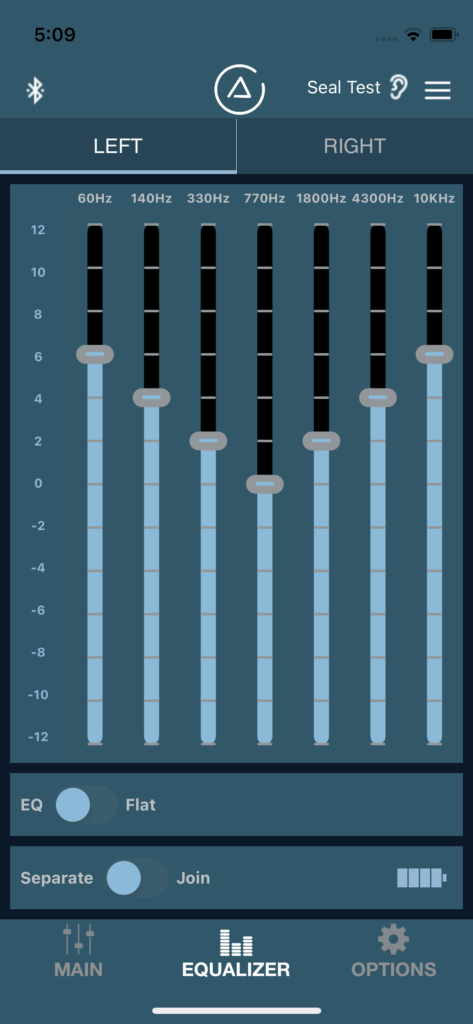
The system delivers sound customized to your unique hearing profile, e.g., how well you hear individual sounds as they increase in pitch. The downloadable ASIAudioBTG2 app allows you to program the 3DME monitors. It’s the bodypack mixer’s job to take your selected settings and deliver the customized sound to the earbuds.
You program the devices on the app’s Equalizer tab. The Equalizer provides a slider control for seven pitches, starting at 60hz, which is about the lowest note on the piano, going up to 10kHz, which includes the highest overtones on the piano (and the highest note on the violin).
The Main tab allows you to adjust the Mic Level, in other words, how much you will amplify the overall sound. This tab also contains a Limiter Threshold, which provides a slider to adjust the maximum sound level going into your ears, expressed in decibels, dB SPL.
Protecting Your Hearing
I exercise strong caution with the Limiter Threshold. Keep in mind that OSHA, the Occupational Safety and Health Administration, advises that when noise in the workplace is at or above 85 decibels (dB SPL) averaged over eight working hours, that companies must implement a program to protect workers’ hearing.
Although I practice the piano for about an hour a day as opposed to the eight hours noted in the OSHA guidelines, and although the OSHA guidelines refer to an average of 85 decibels, I do not move the Limiter beyond 92 decibels. Since music has many dynamic micro-peaks that exceed my selected threshold, most audiologists would find my position to be overly conservative. However, I’m very careful about protecting my remaining hearing abilities. For those who elect to turn off the Limiter Threshold, the in-ear monitors can handle sound peaks up to 135 decibels (dB SPL).
Dr. Santucci recommends that an additional precaution for people like me concerned about hearing conservation is to have your hearing tested every year (which I generally do). Yearly testing will identify any small changes in hearing ability.
Allowing Your Brain to Acclimatize
In addition to the imperative of protecting your hearing, you should understand that whenever you alter your sound environment, your brain will need time to adjust. This applies regardless of the device supplying the new soundscape – hearing aids, in-ear monitors, or music earbuds programmed with your hearing loss.
With the 3DME in-ear monitors, I needed to acclimatize to the new levels of sound coming from my piano. During my first encounter with the monitors, the music’s gorgeous texture reduced me to tears. In the next few weeks, however, I noticed that some of the tones sounded fuzzy. Was that because in some cases the amplification was too much? I let up on the bass amplification and lowered the volume slider. These adjustments helped, although I also believe that my brain needed time to adjust to the new sound levels, particularly in the higher frequencies.
Adjusting the App Settings
Depending upon your comfort level in mixing music and reading audiograms, there are several options for personalizing the app settings to your hearing profile:
Option One: Self-adjustments with trial and error. This option applies to people who understand the basic principles of mixing music. For each frequency band in the app, play a couple of notes on the piano and adjust to a uniform loudness. Dr. Santucci recommends that you slowly increase the slider for each frequency. “See what sounds good,” he advises. “It’s about tuning to your preference. You are the best sound engineer for yourself.” To understand how frequency bands map to keys on the piano, check out this handy resource, “Piano Keys: Theory, History, and Secrets Unlocked.”
Option Two: Self-adjustments with audiogram. An audiogram, a chart that shows the quietest sound you are able to hear at different pitches, or frequencies, helps jump-start the process of establishing the initial Equalizer settings. You can refer to your audiogram to see at what frequency your hearing loss starts and how it changes as frequencies increase. Dr. Santucci explains that the numbers up to 12 represent dB SPL, a different way of expressing decibels than on the audiogram. So you won’t be able to exactly match your audiogram to the Equalizer settings.
Also, the standard audiogram does not extend to the Equalizer’s two lowest and top frequency bands. For those outer bands, you will need to use pure trial and error, described in Option One. If you don’t have an audiogram, free digital hearing screening tests like the Mimi Hearing Test may provide a useful starting point.
Option Three: Working with a music audiologist. This option will probably appeal to most people, since only a minority have experience mixing music or interpreting an audiogram. However, it’s critical to find an audiologist who is a musician or understands the principles of music.
I went this route because the product directions did not explain how the Equalizer settings interacted with the Mic Level and Limiter Threshold. I wanted to explore the possibilities in depth with a professional. Once I had that discussion, I was able to adjust the settings myself, which I did quite frequently during my first two months of use, until I settled on the program that was best for me.
The ASI Audio YouTube channel has some useful videos on how to optimize the fit of the 3DME in-ear monitors. See in particular Dr. Heather Malyuk’s video, Fit for Performance. Although the video demonstrates a prior model of the 3DMEs, Santucci reports that most of it is still applicable. The company also recommends a video series by Craig Anderton, an authority on music and technology.
Cost of the 3DME In-Ear Monitor System
The 3DME base price of $799 is attractive. However, users may discover that they need help with setup and app programming, and they may elect to purchase the custom sleeves for the earbuds. I wanted to share my costs to give readers an understanding of the total picture:
Total 3DME System Cost with Taxes for Nancy M. Williams
| 3DME product cost | $811 |
| Initial orientation with music audiologist | $100 |
| Programming session with music audiologist | $100 |
| Hearing aid audiologist charge for custom molds | $95 |
| 3DME product cost for custom earbud sleeves | $193 |
| TOTAL | $1,299 |
The Bottom Line: A Strong Recommendation
Overall, I’m thrilled with the 3DMEs. They are the only device that I wear when playing the piano. The bottom line for me is that while the 3DME in-ear monitors have some drawbacks including the bulky form factor and the setup time and learning curve, the benefits–especially the sound quality and ability to self-adjust–outweigh the limitations tenfold. In fact, if I have any regrets about the 3DME system, it’s that I waited so long to try it.
How about you? Are you considering trying in-ear monitors? If you have, what were your experiences?

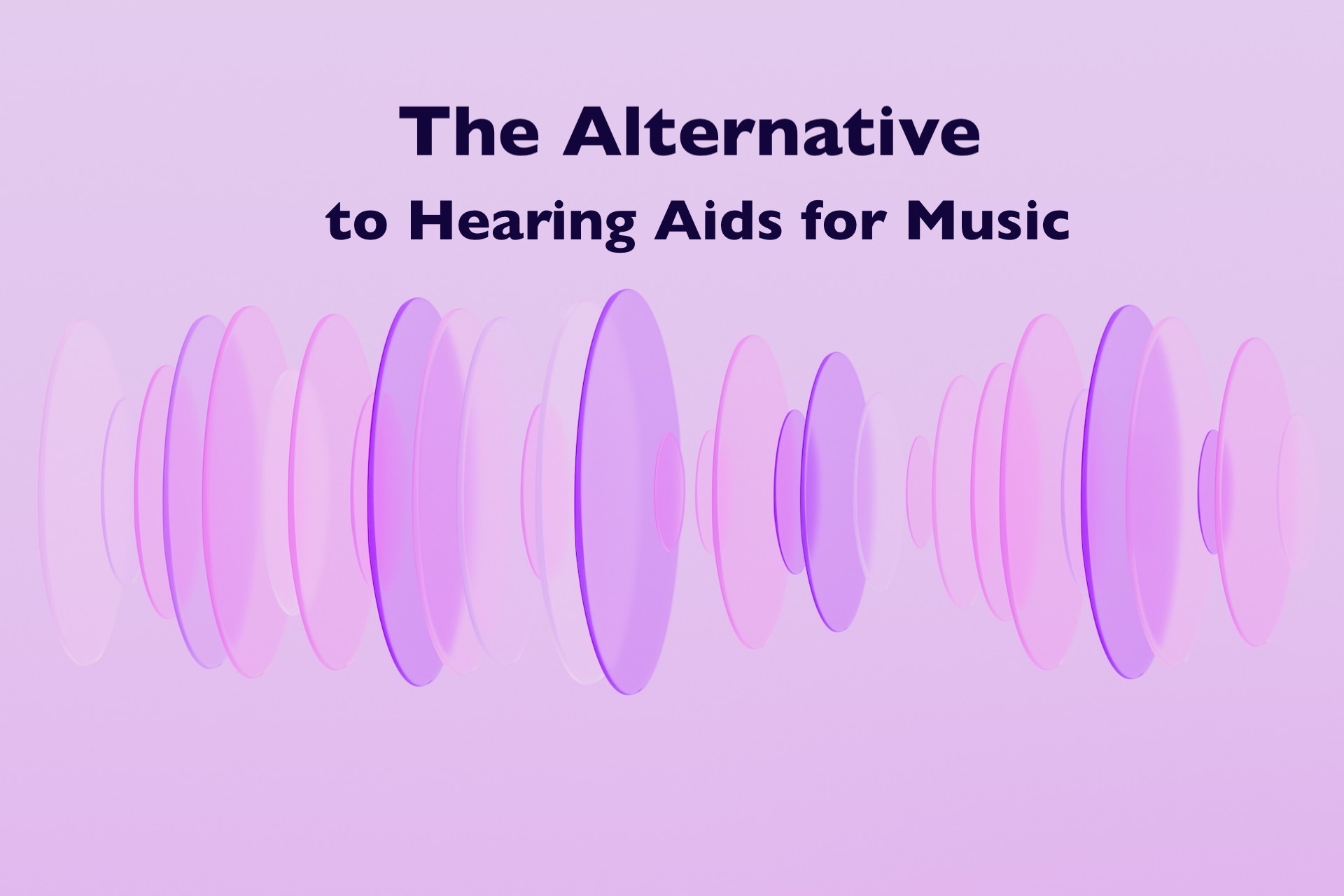
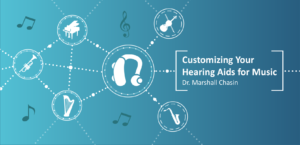
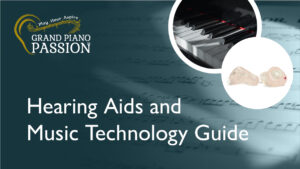
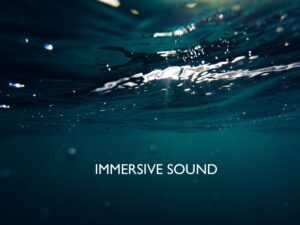
Hi Nancy, so happy for you that you found these! Congratulations!
Do these work with streamed music? Or are the benefits primarily for musicians? Or for listening to live music or a high fidelity stereo system? I know streamed music is very compressed and is a generally poor representation of recorded music, but streaming to my aids with bluetooth has worked pretty well for me.
Thanks for the articles.
Hi Paul, thank you for your well wishes! I’m so glad that you found these articles so quickly. My opinion is that the 3DME monitors would work very well listening to music (as opposed to wearing your hearing aids). I’m saying that because the device’s analog technology, broad frequency range, and superior microphones will give you a better listening experience. That would definitely apply to live music, but also I’m thinking recorded music. I’m not sure whether or not you can stream to the 3DME in-ear monitors. I have asked ASI Audio to weigh in on that question.
Hello, Paul! I don’t work for ASI Audio, but I am one of the audiologists mentioned in the article. I do have some patients who use these for for listening to recorded music, but the 3DMEs are especially great for live music. Worth noting is that the pack is not Bluetooth compatible, so you would need to actually plug the 3DME’s processing pack into your device via the included 8th inch cable. I hope that helps!
Thanks so much, Dr. Malyuk, for clarifying!
Hi,
Would these be good for watching movies and listening to music externally from a HiFi stereo system?
I have mild high frequency hearing loss in one ear and would like the best listening experience for movies and music. My hearing aid does well but these look like they would be better.
Thanks
Hi Luke, it’s a good question. In my opinion, the short answer is yes, since your only other alternative is a hearing aid. Whenever I listen to music, whether live or recorded, I take the time to put in the 3DME monitors. If you’re interested in all of the considerations in response to your question, please see in the comments section for this article the thread started by Craig Embry on May 29, 2024.
Hi Heather, I am very interested in buying these for recorded music, as a audiophile (x musician) with hearing loss. Why would they not be great for recorded music via a high quality music system along with live music? Thanks!
I’m happy that it’s worked out so well for you and I wish you continued succcess. I’m still reluctant to try the 3DME because I’m afraid my hearing loss may be to severe to get any benefit from it. Only way to find out is to just take the plunge, I guess. Wishing you all the best!
Hi Ernie, thanks so much for your thoughtful wishes! I completely understand your reluctance. Not sure if you saw my other article talking about how long it took me a long time to try these out. Here it is: https://grandpianopassion.com/switching-from-hearing-aids-music/. Appropriately, the article’s image is of water, since you mentioned taking the plunge. :-)
It’s no small undertaking to trial the product. But apparently you have a fifty-fifty chance. The thing is…..what if they did work?
I agree. I’ll check into Sensaphonics return policy and see what it’s like in case it doesn’t work out. Play On!
Wishing you the best with that, Ernie! Check out my section on the return policy in this article. It’s 30 days. I suggested that folks might want to book their appointment with a music audiologist like Heather Malyuk before ordering the 3DME. That will give you more time to decide.
Thanks! Would love to consult with Heather Malyuk but she’s too far away. I’ll see who’s closest to me.
This was super helpful. Thank you, Nancy.
You are so very welcome, Jon!
Dear Nancy,
I am not a musician but music, principally classical, is extremely important to me. When I shop for hearing aids, I choose the best for music rather than for conversation. I am trying to figure out if the 3DME would be useful to me with my haring loss. I have a bilateral 30 dB loss at 125 Hz, sloping down to a bilateral 80 dB loss at 8000 Hz. Could the 3DME potentially be useful with this kind of hearing loss?
Thanks for your consideration.
Dear Richard, I completely understand your love of music! As you know, I’m not an audiologist or a clinician – just a fellow user – so I can’t dispense medical advice! However, I wanted to let you know that I also have what audiologists call a downward-sloping hearing loss, and as you know, the system works well for me. So you might want to give these a try. I wanted to make sure that you saw Dr. Heather Mayluk’s advice to another music listener in the comments above: “I do have some patients who use these for for listening to recorded music, but the 3DMEs are especially great for live music. Worth noting is that the bodypack is not Bluetooth compatible, so you would need to actually plug the 3DME’s bodypack into your device via the included 8th inch cable.”
Greetings Nancy,
I have a question regarding 12 string guitars. I have a high frequency hearing loss and am in the process of restringing my guitar with a new set of strings. These new strings are advertised to produce a softer sound as opposed to other manufacturers – we will see about that. I have the top of the line hearing aids from the manufacturer but will the 3DME allow me to hear more clearly when I play chords at higher frets on my guitar. I also sing while I play – Will these make my voice sound different?
Thanks for your time.
Hi Rudy, thanks so much for writing. These are good questions – I’m checking into them and will be back to you soon. Best, Nancy
Hi Rudy, I heard back from Dr. Michael Santucci, and he supplied these answers to your questions:
1) Will the 3DME allow me to hear more clearly when I play chords at higher frets on my guitar? The 3DME has a much more extended high frequency response than hearing aids, so it is likely that the guitar highs will sound better. It’s difficult to predict more without seeing your audiogram, but the product has a 30 day return policy so not much to lose.
2) Will my voice sound different? Most likely, much like any form of amplification. The EQ can be used to adjust; however, most vocalists prefer to have a separate mix of their vocal using an in-ear monitor receiver pack that connects top the 3DME. That way you can adjust your vocal sound signature and volume separate from the ambient mics, which can be adjusted for the room.
hello and thanks for this article. I sing with acoustic instruments and amplification, and find that my hearing aids and monitors (on the floor and a small one at waist level) are not optimal, so am planning to try some IEM’s. Any info on how these work with amplification? Thanks! (Also, if you want to mix other voices and instruments into your monitor mix, but these are not bluetooth, I wonder how that might work, tho i recognize that this is outside of the scope of this article or your situation. Maybe you might refer me to a source of info for this?) Arni (in Seattle)
Hello Arni, and thanks for writing! I would love to be able to answer your questions, yet you’re right, they are beyond the scope of our expertise. I’m going to connect you over email to someone at ASI Audio who will be able to help. Best, Nancy
Since I posted my question, I’ve learned a fair amount, including by trying some Shure IEM’s in a couple of performances. I’m actually very excited about this now, and especially trying some higher level IEM’s. There is a musician/audiologist my musician son started seeing in Philadelphia named Frank Wartinger (I live in Seattle, but visiting my son in Philly now). I’ve been exchanging email with Frank and plan to meet with him while I’m here. He works with Sensaphonics as well as many other brands, so I think I’ll get some good info there.
So glad that you are on this path!
I wonder if the 3DME system body pack can be used with over-the-ear headphones or will it only work with earbuds?
Hi Ernie, it’s a good question. I think that the headphones would probably need to be made by ASI Audio. I will see if someone from the company can weigh in.
Hi, Ernie! This is Charlene from ASI Audio. Happy to help. You would not be able use over-the-ear headphones or other earphone brands with the 3DME system. The 3DME universal-fit (and custom fit) earphones are uniquely designed to capture ambient sound with a binaural microphone system embedded in the earphones, sending it to the 3DME bodypack mixer that enables custom mic levels via the ASI Audio smartphone app.
I’m sorry to say that I sent a copy of my audiogram to Sensaphonics and they replied back that my hearing loss was too severe to get any benefit from the 3DME system.
So my only other option was to use a streamer to stream music thru the mixer directly to my hearing aids. It works ok and it’s better than nothing. I will keep playing for as long as I can.
Hi Ernie, sorry to hear that your hearing loss is too severe. I’m glad to hear that you found a different solution and that you’re continuing to play!
As an audiophile, I am looking for a high quality hearing device when listening to vinyl. Audiophiles spend multiple 10’s of thousands (sometimes over $100k) on equipment to try to recreate live music in their homes. However that expenditure is limited by the quality of hearing devices for those of us with hearing loss. I have very high quality hearing aids, but sometimes have harshness or simbilence from my hearing aids.
This device is very intriguing, but the comment by Heather gives me pause, implying it’s great for live music but maybe not for recorded music. Not sure why that would be for very high quality recorded music reproduction. Comments?
For ASI, it appears the audiophile market is untapped although your product may be the best available solution. An audiophile wish list would be very high quality microphones with known frequency response curves with your electronics flattening that curve. (You may have that, but don’t publish it). Just 20-20,000 hz, without +/- on db. You should also expand the number of adjustable frequency bands, with potential slope adjustments on the bands. Audiophiles would spend $K’s on such a product.
Hi Craig! It’s so difficult to say for sure without knowing your hearing profile, but I would try them as they are superior to hearing aids for any type of music enjoyment. They have a 1-month return period so I think trying them out would be your best bet. Keep in mind that getting a great seal in your ear canal is essential, so if they don’t seem to fit perfectly, you might need to invest in custom tips! I recently fit an audio engineer with the system for use in a recording studio, but I don’t have as much experience using this system with an audiophile. I’d love to know your thoughts after you give it a try! heather@soundcheckaudiology.com
As Heather indicated, the 3DME was designed primarily with the performing musician in mind, with very high fidelity audio reproduction and very wide dynamic range capability. While this dynamic range capability is greater than would be needed in a home listening environment, there is nothing that precludes the product’s use in that use scenario. As you have noted, even high quality hearing aids tend not to do well with music, as they are typically optimized for speech frequencies and characteristics, and with limited dynamic range handling.
We expended considerable effort in making the ambience reproduction as natural and neutral as possible. The tiny MEMS microphones inherently have a very flat frequency response, with some low frequency rolloff and high frequency boost, which we do equalize out. But the net response through the system to the user’s eardrum is decidedly not “flat” as conventionally measured and would sound very unnatural if it were. That response needs to take into account the placement of the microphone in the earpiece and the ear, but also very significantly, the blockage of the natural ear canal resonance by the sealed earpiece. All this is not easily describable in a conventional frequency response plot. But your ears will reveal it.
Tapping into the audiophile market does seem to be a natural direction: natural reproduction with the ability to compensate for individual hearing issues. In addition to loudspeaker reproduction, the excellent sound quality is also available for direct earphone listening. A cable adaptor is necessary to take the headphone or line output of a preamp into the 3.5mm Monitor In jack on the side of the unit. While there are many very high quality headphones out there, the 3DME can match up to the best of them, but with the added benefit of its sound adjustment capabilities.
At present, we are still concentrating on our expanding live musician market and secondarily the concert attendee, but we would be well-advised to be looking seriously into the audiophile market. Modifications to the frequency equalization aspects could also be considered, although this would need to be balanced with the need to keep things intuitively interpretable.
Great information – reading through the comments I didn’t see anyone question the typical latency issues with Bluetooth for live performances. I’ve never seen an EIM wireless setup other than UHF. The product website claims zero latency, how is that even possible?
Hi Richard, thanks for writing. I’ve forwarded your comment to the folks at ASI Audio and asked them to respond directly.
Hi, Richard! The 3DME does not pass audio through its Bluetooth connection – only control signals. The 3DME’s audio signal path is entirely self-contained within the earpieces and body pack. This is why functionality continues even when the app is closed.
With the EQ bypassed (“Flat” switch position), the signal path is entirely analog and therefore essentially zero latency. With the digital EQ engaged, the latency is still a very low 0.54 msec, equivalent to sound in air traveling for 7 ½ inches, which is very close to zero. These numbers apply both to the ambience (microphone) signals and the Monitor In signals. Often, though, that latter signal source will be, for example, a body pack wireless receiver getting a monitor feed from a mixing console. The wireless path will add typically several milliseconds, as will a digital mixing console and possibly a wireless microphone. But even those much greater sources of latency would not affect the zero or near-zero latency of the 3DME’s ambience reproduction.